1812 Commencement Program

This copy of the printed program for the 1812 commencement exercises shows the members of the graduating class and the presentations that they and other speakers were scheduled to deliver.


This copy of the printed program for the 1812 commencement exercises shows the members of the graduating class and the presentations that they and other speakers were scheduled to deliver.

This copy of the printed program for the 1813 commencement exercises shows the members of the graduating class and the presentations that they and other speakers were scheduled to deliver.
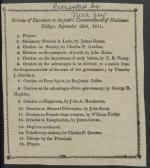
This copy of the printed program for the 1811 commencement exercises shows the members of the graduating class and the presentations that they and other speakers were scheduled to deliver.

Henry F. Slaymaker, a member of the Class of 1810, receives this diploma as a member of the Belles Lettres Society on May 29, 1809.


George Thomas Martin, a member of the Class of 1815, receives this diploma as a member of the Belles Lettres Society on August 12, 1815.

Robert Laverty, a member of the Class of 1809, receives this diploma as a member of the Union Philosophical Society in 1809.


William Brown, a member of the Class of 1812, receives this diploma as a member of the Belles Lettres Society on August 6, 1811.

This copy of the printed program for the 1810 commencement exercises shows the members of the graduating class and the presentations that they and other speakers were scheduled to deliver.
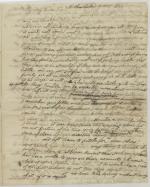

Charles Gardner, a soldier in the United States Army, writes to his sister, Julia Gardner, regarding his daily life stationed at Carlisle Barracks.
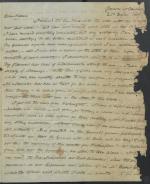
Charles Gardner, a soldier in the United States Army, writes to his mother regarding his daily life stationed at Carlisle Barracks. Gardner mentions his finances, possibilities for advancement in rank, and shares other general news.
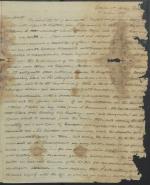
Charles Gardner, a soldier in the United States Army, writes to his parents regarding his journey to his current posting at the Carlisle Barracks.

A description of this ledger is not currently available.
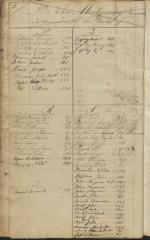
A description of this ledger is not currently available.

A description of this ledger is not currently available.

Dickinson President Charles Nisbet writes two letters to William Young, a bookseller and printer in Philadelphia, that focus on the implications of the French Revolution and Napoleon Bonaparte's military campaigns.
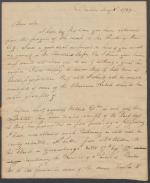
Alexander Nisbet writes four letters to William Young, a bookseller and printer in Philadelphia, on issues that include Young's suit involving a Mr. Webber and a payment made by the Estate of Webber for a parcel of books.

William Turnbull writes to Alexander Nisbet inquiring as to whether he had informed a W. Bowie of the particulars of a new account with the Trustees of Dickinson. Turnbull also invites Nisbet to the christening of his son. Transcript included.

James McKenzie writes a letter to President Charles Nisbet expressing apprehension over a potential invasion of Great Britain by France, and the precautions taken against it.
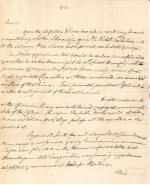
John Dickinson writes ten letters to Benjamin Rush on a number of different topics, including the administrative affairs of Dickinson College, the state of political affairs in the United States, political philosophy, and the death of Dickinson's

John Dickinson writes to Attorney General Caesar Rodney discussing the implications of the United Kingdom's policies towards other countries.
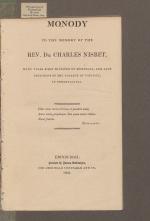
Charles Keith publishes this item a year after the death of Dr. Charles Nisbet.
Note: See Related Entries for a link to Keith's letter to Anne Nisbet on July 11, 1805.

James Buchanan writes two letters to Henry Shippen regarding purchasing land out west, a judicial appointment in Iowa, Pennsylvania politics, the financial system, and the Deposit Law of 1836.